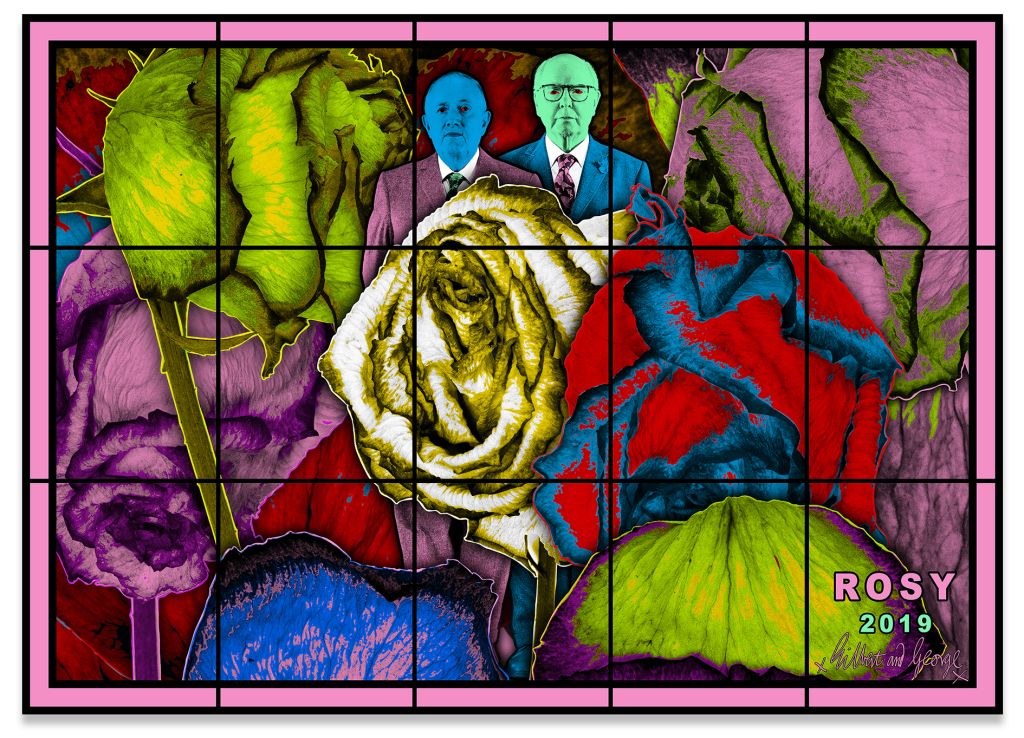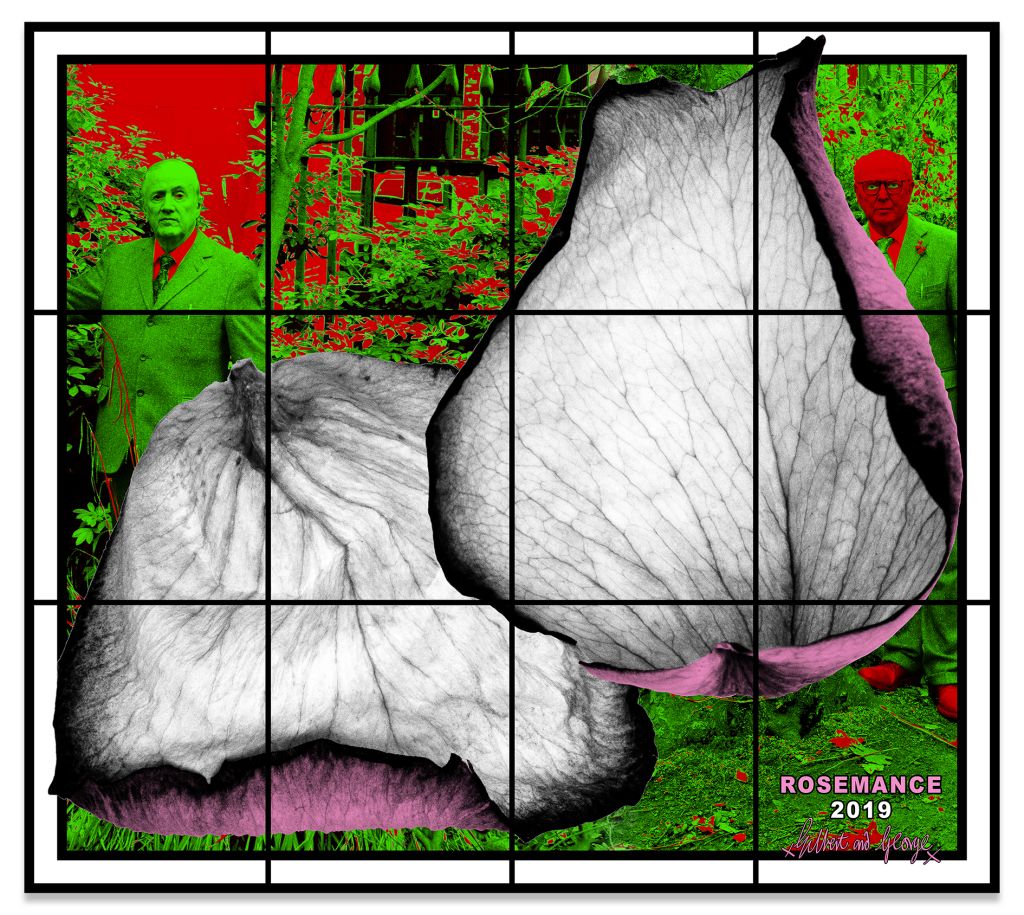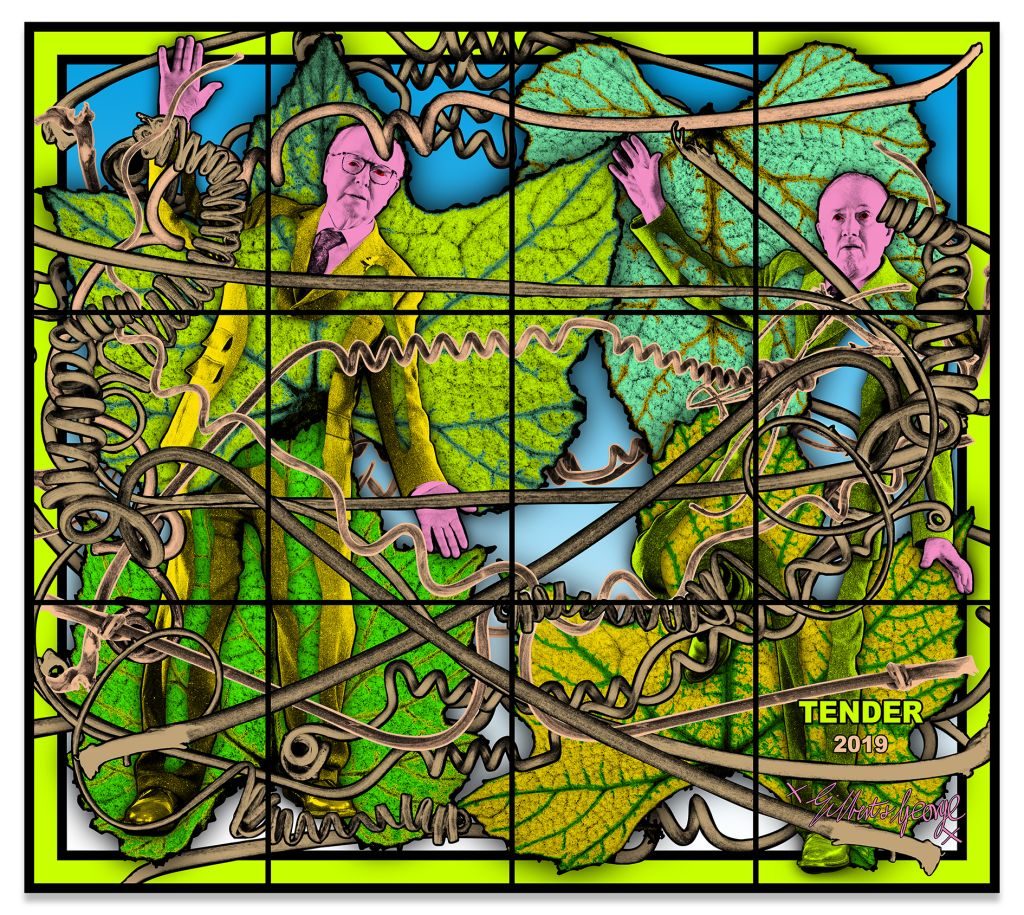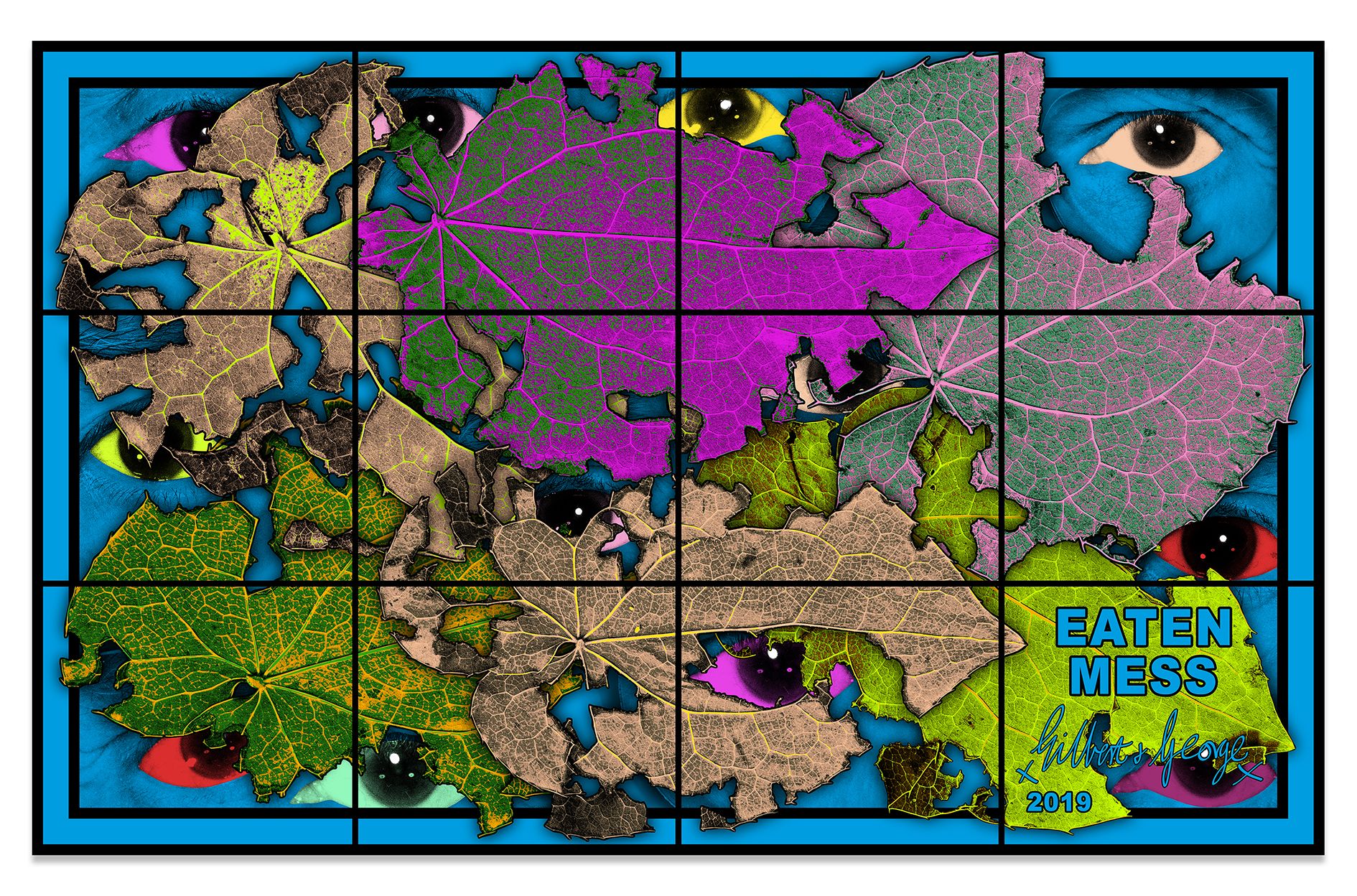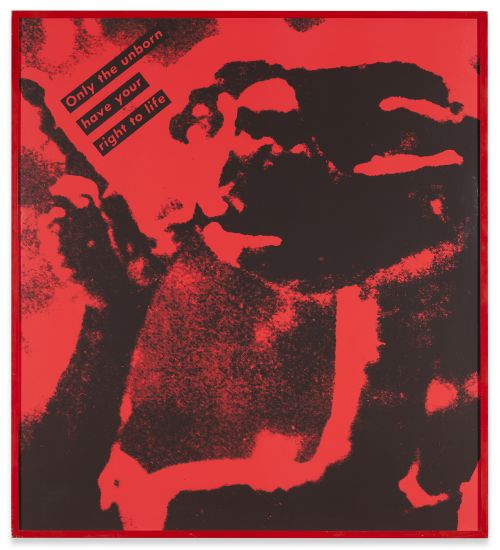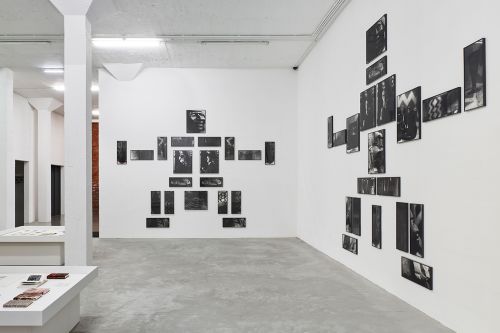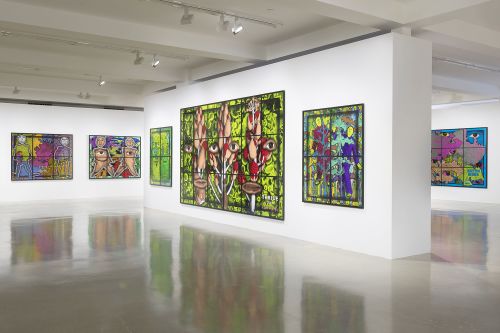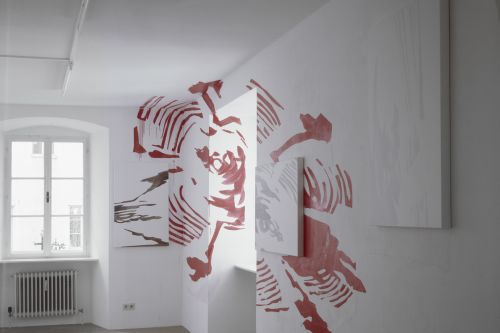Their art shows the world of the modern city streets and the inner world of feelings, hopes, fears and memories.
In order to make their art, Gilbert & George must be disciplined, controlled and calm, and simultaneously crazed and guided by their feelings. By balancing these psychological states, Gilbert & George make art that is confrontational, brutal, dream-like and mysterious. Each picture contains the past, present and future.
On walks around their home in the East End of London, Gilbert & George see the routines and feelings of their fellow citizens, from all backgrounds. Office workers and junkies. They observe the spectrum of life the way you might observe the weather. This is their subject. The art of Gilbert & George is committed to realism but is also deeply romantic, finding heightened or disturbed emotion in ordinary things.
In every picture and ‘Living Sculpture’ the viewer sees the bond between Gilbert & George as profound and absolute. This duality proposes two men brought together by fate as outsiders and seekers-after-truth. Dualism structures the vision and art of Gilbert & George: two men, one artist; control and loss of control; reactionary and radical; traditional and ultra-modern. The singularity of Gilbert & George derives from their duality.
There is a magical quality to the union of Gilbert & George, as communicated by their art. The notion of two tramps, always on the outside, with only each other, journeying through life, at times seeming to be stooges of fate, at times cosmic travelers, at times old-fashioned song-and-dance men; mystical, vulnerable, supernatural, suffering, ritualistic, universal in their contradictions as much as their constancy.
Gilbert & George maintain a deeply felt opposition to art theory and the reference of art to the history or theory of art. Asserting instead the power of emotion and actuality, their art addresses subjects that are culturally excluded, neglected or disowned. Their art questions societal conventions, taboos and morality. By looking at difficult subjects the art and vision of Gilbert & George is intended to ‘de-shock’ rather than seeking to shock.
Likewise, however poetic or spectacular an individual picture or sculpture may be, the art of Gilbert & George is not intended to be an aesthetic, formalist or conceptual statement of any kind. By disrupting certainties, their art wishes the viewer to question life and art within themselves and their own experience.
For Gilbert & George, the modern world is always in broiling, volatile restlessness. Brooding, lonely, disrupted, portentous, mad, monumental, ordinary, desolate, violent, blasphemous, infinite.
In conveying the intensity of this vision to the viewer, the art of Gilbert & George is empowered by formality rather than formalism. The more formal the demeanor and manner of Gilbert & George, the more intense and direct their communication of extreme emotional states, behavior, landscape and ideology.
The untameable extremism of Gilbert & George lies within themselves; their suits and ties have the function of bomb casing. The well-mannered conservatism of Gilbert & George and their creation of a precisely balanced paradox reverses the reactionary and the radical to declare an autonomous position of lucidity, isolation and inquiry. Suited and impassive, blindly stumbling or screaming, Gilbert & George take their places in the visionary landscapes of their art as both participants and witnesses.
The art of Gilbert & George makes the viewer think about art from first principles and primal responses: what does this make me feel and why?



